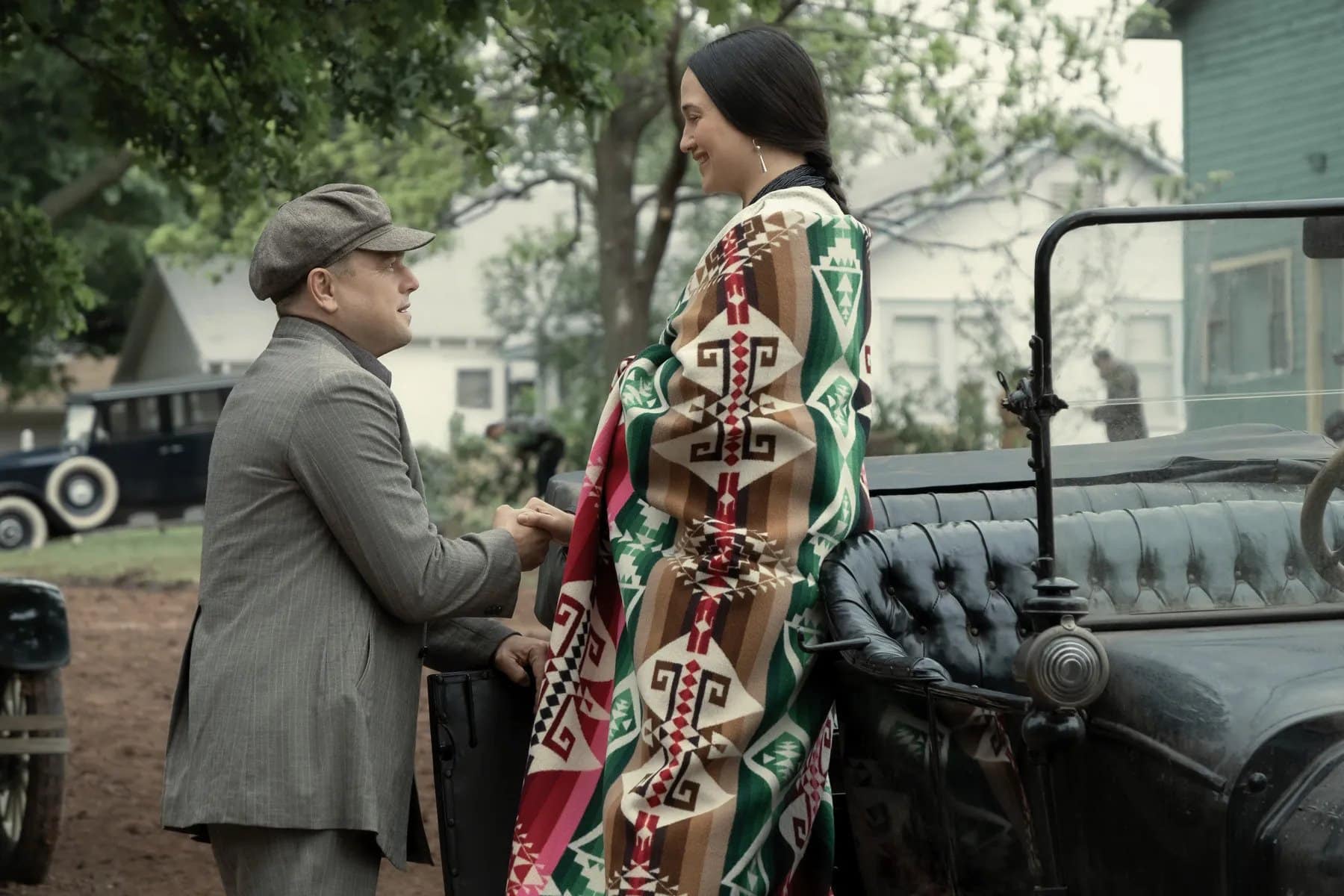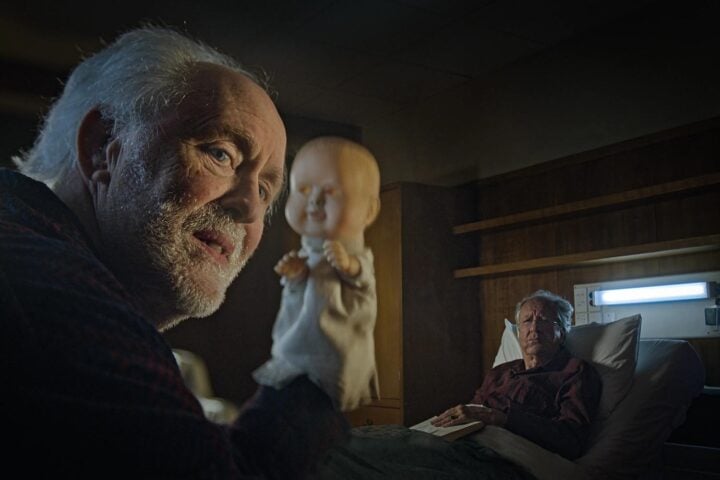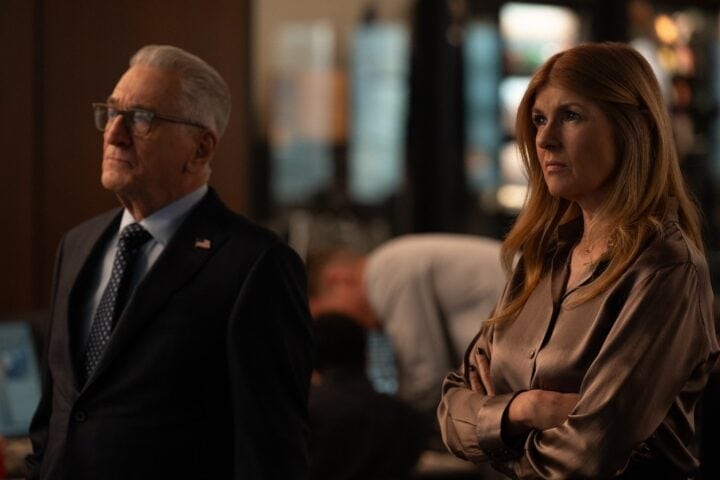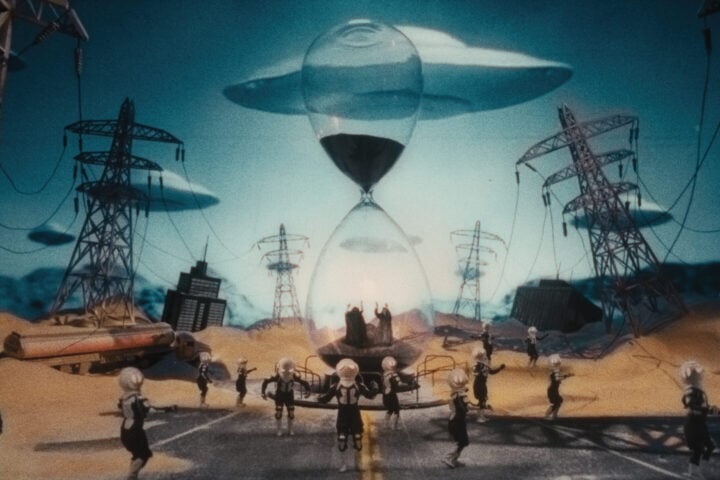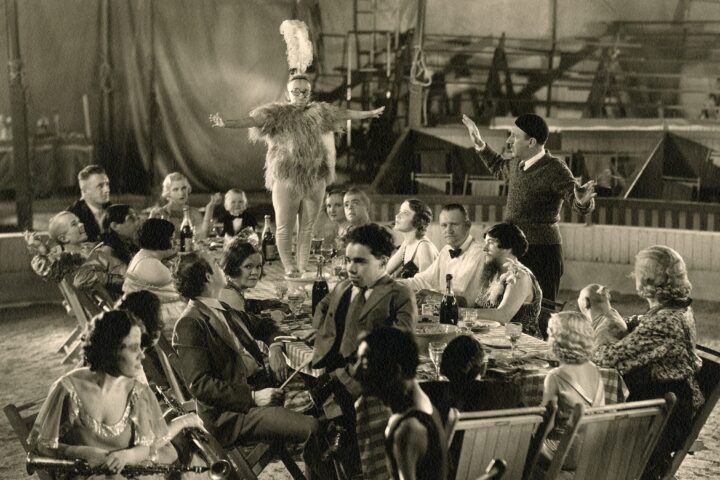Martin Scorsese’s engrossing 1920s-set historical thriller Killers of the Flower Moon opens with a lament. Elders of the Oklahoma Osage tribe gather to grieve for the younger kin who have been seduced by the decadence of their white neighbors. In many cases, these “deaths” are spiritual, but plenty will become actual—the dreadful end game of an elaborate ruse to bilk the Natives of wealth attained through the area’s plentiful oil reserves.
Author David Grann chronicled this horrific real-life plot, and the scrutiny of it by the then-nascent Federal Bureau of Investigation, in his 2017 nonfiction book of the same name as the film. Scorsese, who co-wrote the screenplay with Eric Roth, initially followed Grann’s procedural template with the F.B.I. as the primary focus. But during pre-production he and Roth changed tack, inverting the narrative so that the Osage and their slaughterers take center stage, with particular emphasis on the half-witted Ernest Burkhart (Leonardo DiCaprio), his calculating rancher uncle William King Hale (Robert De Niro), and Ernest’s Osage wife, Mollie (Lily Gladstone), who’s willfully blind to the devils in her midst.
Killers of the Flower Moon is a three-hander on an epic canvas, a corrosive analysis of America’s colonialist and capitalist excesses as refracted through a marital melodrama in the vein of George Cukor’s Gaslight or Alfred Hitchcock’s Suspicion. As those artists did in those films, Scorsese cultivates a spellbinding air of uncertainty, even though it’s clear from the moment Ernest courts Mollie at his uncle’s insistence that little good will come from their pairing.
Ernest is dim, but much like his uncle—who utilizes his reputation as an upstanding member of the community as a deflective shroud—his outward charm and gentility tend to win the day. Even as the bodies pile up, and even as Mollie loses friends and family to poison and bullets and bombs, a glimmer of hope remains, until nearly the film’s climactic scene, that her husband’s love is true. That Ernest couldn’t possibly be the cold-blooded murderer he appears.
Evil isn’t always blatant. And it’s especially terrifying when it’s subtle, easily mistaken for compassion and kindness. It shouldn’t be surprising that DiCaprio and De Niro both have it in them to embody the worst of mankind (they’ve done it for Scorsese plenty of times). But there’s something eerily placid about their work in Killers of the Flower Moon, their characters’ odiousness perversely stemming from a serenity of body and mind. William’s malevolence, chillingly conveyed by De Niro in one of his best recent performances, is ultimately shown to be more practiced than his nephew, whose furrowed brow and thousand-yard stare become numbly fixed as the story unfolds, portending his eventual betrayal.
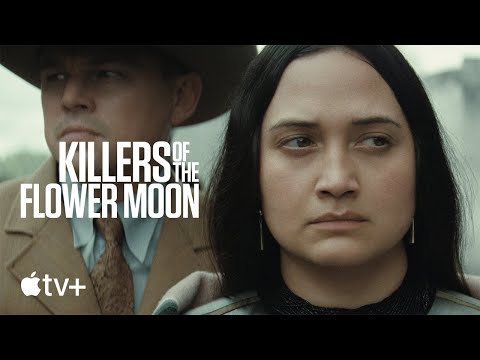
It’s Mollie, though, who’s the film’s center, even if it takes a while for that to become apparent. For a good chunk of Killers of the Flower Moon’s three-and-a-half-hour runtime we’re in a woozy haze of conspiratorial subplots and off-kilter imagery; in several of the murder scenes cinematographer Rodrigo Prieto keeps the faces and identifying features of the Osage killers at the edge of or just out of frame. This upends any feelings of groundedness and primes us to see Mollie as a saintly victim, a beggar to her own demise. In truth, the internal rhythms of the picture—sculpted as always by Scorsese and his longtime editor Thelma Schoonmaker—mirror her emotional complexity and her increasingly untethered mind-state from the start.
Mollie is lost and so are we, and of course she looks to the two men in her life for guidance that proves more and more elusive. It’s a tricky role that Gladstone is playing as Mollie is both emblem and individual. She’s a stand-in, as that opening scene suggests, for an indigenous civilization corrupted by American vice (free enterprise begetting, and acting as a cover for, genocide). But she’s also recognizably flesh-and-blood in her hopes and desires, in her belief in and adoration of the husband who wants her dead but also loves her back. The mental muddle comes to a head in an astonishing sequence in which Ernest injects himself with a dollop of the slow-killing poison he’s been giving Mollie, both of them deliriously tripping while a nearby field fire expressionistically illuminates their bedroom window.
Their hearth is no longer a home, and it’s soon after that the F.B.I., led by Jesse Plemons’s cowboy-hatted Tom White, arrives. Scorsese treats the feds’ late entrance like the first pangs of clarity after a weeks-long bender. In its final hour, the film’s fever-dream ambience segues into just-the-facts-ma’am practicality, complete with dimly lit interrogation and histrionic courtroom sequences, the latter featuring John Lithgow as prosecutor Peter Leaward and Brendan Fraser as W.S. Hamilton, attorney for the defense. The parasitic relationship between William and Ernest implodes, and DiCaprio gets an on-the-stand confessional monologue that has a similar nauseating power to De Niro’s stammering phone call in The Irishman.
Yet it’s still Gladstone who dominates, in a climactic scene in which Mollie stoically confronts Ernest about his crimes, finally seeing the truth she has long denied. And also in what’s perhaps one of the most audacious sequences that Scorsese has ever conceived, a provocatively theatrical approach to the “Whatever Happened To…” end titles crawl that closes out many a “true story,” with Mollie as the poignantly complicated focal point. We then exit Killers of the Flower Moon as we entered it, through the perspective of an Osage ceremony, this one more reverently communal—an evident paean to survival, to endurance against all odds.
Since 2001, we've brought you uncompromising, candid takes on the world of film, music, television, video games, theater, and more. Independently owned and operated publications like Slant have been hit hard in recent years, but we’re committed to keeping our content free and accessible—meaning no paywalls or fees.
If you like what we do, please consider subscribing to our Patreon or making a donation.

